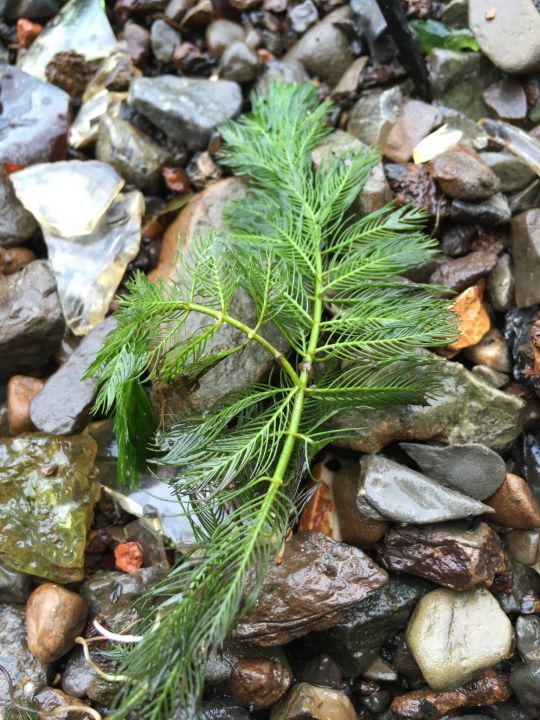

Eurasian Watermilfoil
(Myriophyllum spicatum L.)
Description
This aquatic plant is usually found in shallower water around 3-10 feet deep however it can be in depths up to 30 feet. Growing below the water’s surface, this plant has a central stem with thin feather-like leaves.Its leaves are dark green in colour. The plant itself can reach up to 8 feet long and produce orange/red flowers which break the water’s surface. A reason why this plant is so widespread is that it can grow an entire new plant from just a small fragment. The invasive Watermilfoil can also breed with our native watermilfoil to create a hybrid which is even more problematic.
Range
Originally introduced in the 1800’s it has rapidly spread throughout North America and is now found globally. It is also the most common invasive aquatic plant within North America.
Impacts & Control
Growing in thick mats, this plant will block sunlight inhibiting the growth of native species and impede recreational activities such as boating and swimming. Due to its dense growth, fall decomposition of the plant will degrade water quality via decreasing oxygen levels in the water, sometimes causing fish die-offs. Controlling the spread of this invasive is extremely difficult as it is very prolific and very widespread. Control methods are hand removal, controlling water levels and herbicides can be used but may affect native species. Interestingly in some US states, they use Grass Carp to control Eurasian Watermilfoil!
There is a similar-looking native plant known as Common/Northern Watermilfoil and the main distinguishing feature between the two is the native version has 6-8 leaflets while the invasive has 12-16.




